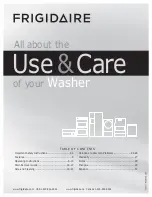
17
Oil Fired Gas & Diesel • Rev. 4/7/2016
GLOSSARY OF TERMS
PSI
– Pounds per square inch. Pressure washers are designed and rated to operate at a specific
PSI. Operating at pressures exceeding the maximum rating could result in damage to the unit
and/or SEVERE PERSONAL INJURY.
GPM
– Gallons per minute. The orifice on the pressure wand assembly has been selected to
deliver up to the maximum GPM for your machine.
PRESSURE WAND ASSEMBLY
– This refers to the gun, wand, and nozzle.
PUMP
– The pump moves the water through the system and delivers it to the pressure wand
assembly.
UNLOADER VALVE
– Is a valve located at the head of the pump for unloading water back
into the bypass when the trigger gun is shut off. It also reduces the load on pump when gun is
off.
OIL, PUMP
– The oil used within the pump to lubricate its operation. Important to use only
SAE 30 W Non Detergent (GP Pump) or Hydraulic 68 (EK Pump) in the pump (see diagram).
OIL, GASOLINE ENGINE –
Gasoline Engines need appropriate lubricant. Use 10W30
detergent oil.
BURNER
– The burner heats the water in hot water pressure washers. It is located under the coil
and may be powered by furnace oil or diesel fuel.
BACK FLOW PREVENTER
– Device to prevent flow backwards into potable water supply.
MAXIMUM WORKING PRESSURE
The water heater coils are designed to operate safely at
normal working pressure. Each machine is equipped with a safety pressure relief valve which
prevents over pressurization of the high pressure system. It is an important safety device and
must not be tampered with in any way.
TEMPERATURE CONTROL-
The water heater is equipped with a temperature control which
shuts down the burner in the event of excessive outlet temperature caused by insufficient water
flow through the heater coil. Do not set thermostat above 195°F
PRESSURE SWITCH -
A high pressure switch is used to control the burner. It is part of the
burner control system (see diagram).
FLOW SWITCH
– A flow switch is installed on the outlet of the high pressure pump and will
shut off the pump and motor in the absence of water flow as well as turning it back on when flow
is detected (by squeezing the trigger).
















































